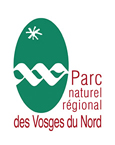

The bat is an unknown, strange, even frightening animal. In the collective imagination, bats are only good for haunting our attics, barns, or caves. However, they play an essential role in the regulation of many ecosystems, and some of them have a very unusual lifestyle. The Nathusius’ pipistrelle bat, for example, undertakes a long migration every year: it leaves its summering grounds in northern Europe, particularly in the Baltic States, and in just a few weeks reaches western and southern Europe to spend the winter. It is astonishing to think that this small flying mammal weighing barely eight grams can travel more than two thousand kilometers. This European bat even holds the record for the longest migration route for a European land mammal. Scientists from all over Europe are working together to better understand how pipistrelles migrate and to better protect them. How does this tiny bat complete its perilous odyssey every year? To discover the secrets of the pipistrelle’s journey, we must travel across Europe to meet this small and still mysterious animal.
The film projection will be followed by a presentation of the Interreg Rhin Supérieur project “Endangered Animal Species” and a presentation of the measures implemented in regional forests in favour of bats. Finally, there will be a question and answer session with participants.
Language/s that will be used at event: French / Films with German subtitles
Contact person name and email : Antoine Surget a.surget@parc-vosges-nord.fr
Léa Chauvet l.chauvet@parc-vosges-nord.fr
Sébastien Morelle s.morelle@parc-vosges-nord.fr
Project webpage (available in French and German): https://www.interreg-rhin-sup.eu/projet/especes-animales-en-danger